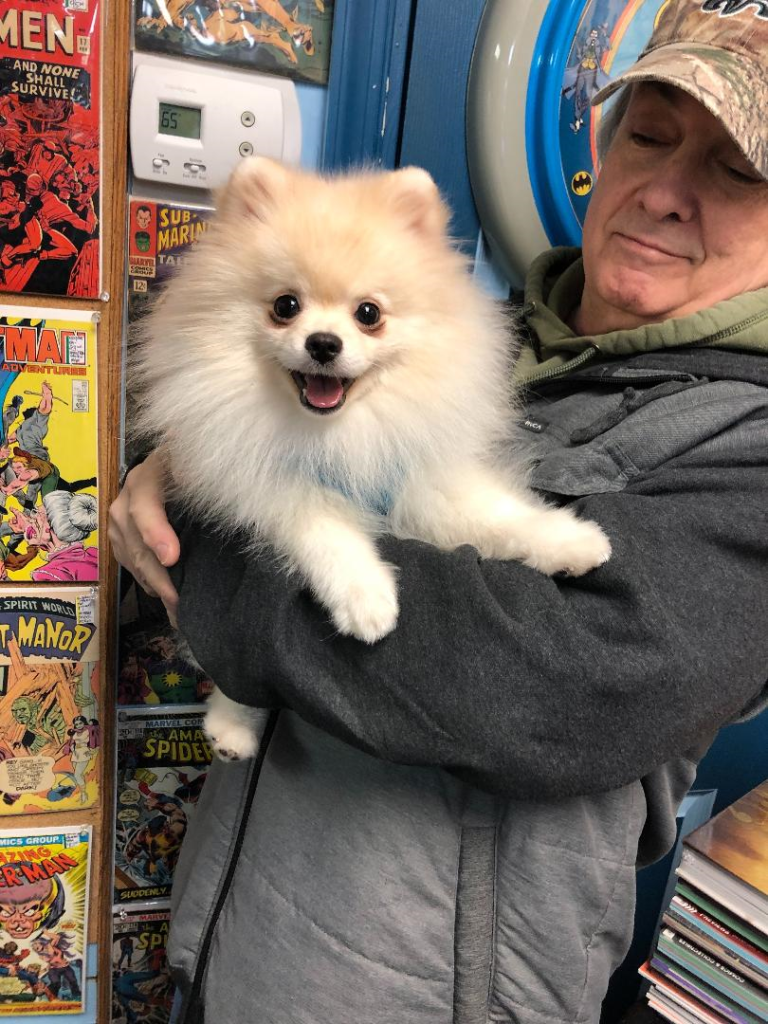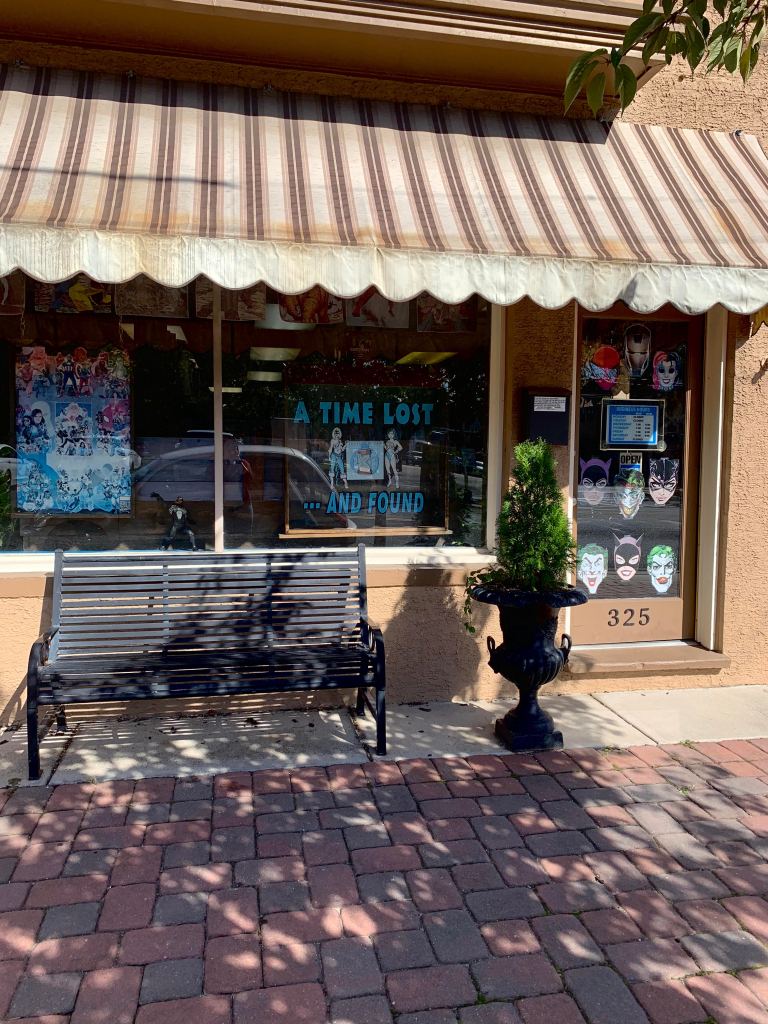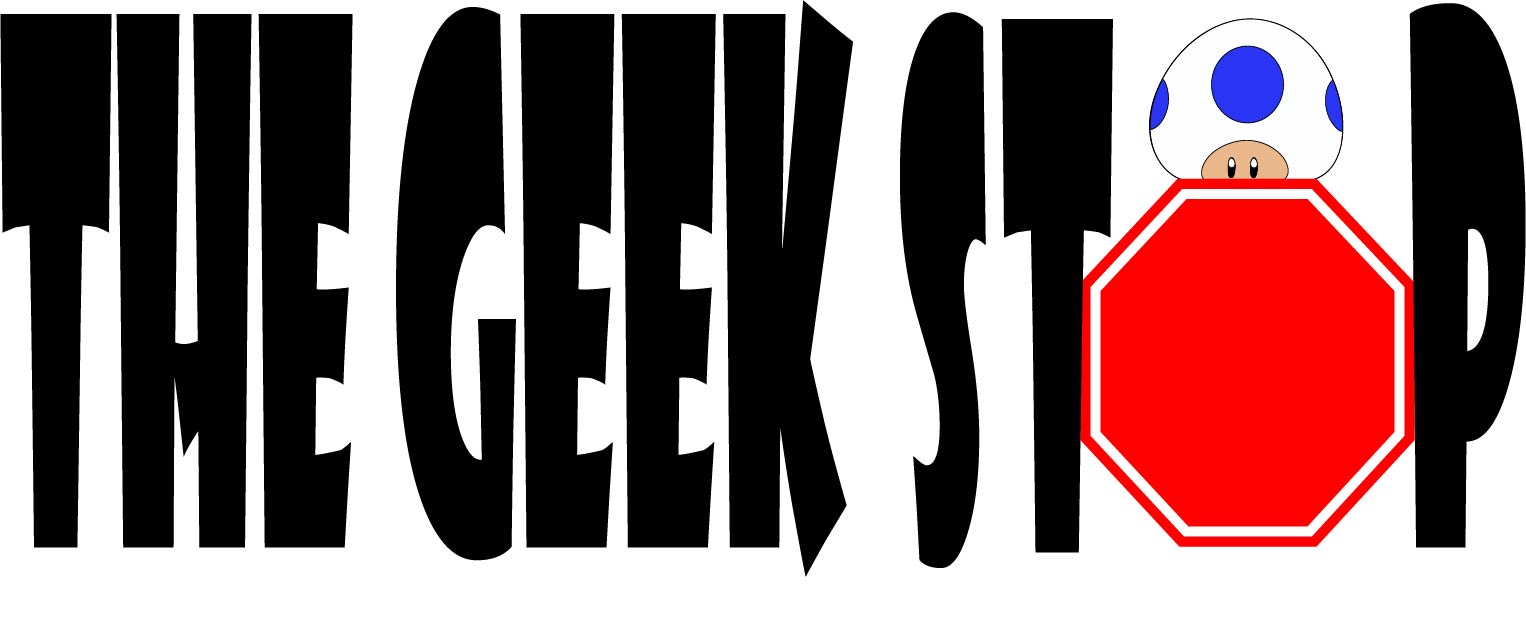
As I walked down the thin road of Atlantic Avenue, at the end of the street corner was a little comic book store tucked away called ‘A Time Lost and Found.’ Before entering you notice it is a two-story building, which is where Frederick AKA ‘Fred’ lives with his young pup Titian (pronouced Tish). The windows and front door are decorated with Marvel and DC characters along with a sign reading ‘A Time Lost and Found.’

Why comic books? Where did this passion stem from and how did it become what it is today?
Since 1975 Fred has been apart of the comic book store industry. He first started out by putting on shows, but one of his fondest memories he recalled was publishing a portfolio for painter Boris Vallejo. Since a child Marcus has had a love for comics, first it started out as a hobby and then the rest was history.
Listen to hear Fred talk more about how the comic book store industry began and how his passion for it grew.
What do you enjoy about being apart of the ‘geek culture’ movement today? Tell me a story about how it changed over the years.
For Fred, his enjoyment of the ‘geek culture’ community lies within the art. “Even today I mean I’ve read the storylines and once in a while something pops up that is really good but I’m really into the art, I collect the art, the original art work from the books, and the covers, and the paintings, and whatever. That’s my main interest in it.” Around the mid 70s though the industry wasn’t doing so hot. News industries and stands were the main distrubtors of the comics, but they might’ve preferred to keep what would sell better on the shelves, such as Playboy or Time. Fred mentions how this was when the direct sales business began, and was pushed forward by a guy named Phil Seuling from New York who negotiated with Marvel and DC to start direct sales, which saved the industry at this time. “But, as the individual shops grew the sales grew and it became a viable industry again. I guess that was around 1978 where it really started rolling”, Fred recalled. These ups and downs also affected the art industry aspect of comic books of course. Some of the really good artists at the time wouldn’t stay in the industry because other opprotunities such as advertising were more profitible. “Comics used to be 15, 25, 30 cents an issue and the reason they are 3.99 and 4.99 now is if they want to keep these guys in business they need to do that. If you appreciate art some of the covers are just outstanding. There’s Joshua Middleton, Stanley Lau (AKA Art Germ)…these guys are doing amazing work and I don’t think if they weren’t getting paid that they would stay in this industry.” Another way the ‘geek culture’ movement has changed today in the comics world, is that the value of a comic can become a significant part of collecting in the community, especially when a comic in the right condition can sell for over 1 million dollars at an auction. The ‘geek culture’ has changed a lot over the years and there’s a lot of different reasons now that people may get into comic books.
Listen to hear more about how the comic book community has been shaped over the years.
What is your favorite part of running a comic book store? Is there a specific memory you have in mind?
For Fred, the comic book store industry is more fun than it is work, so it’s more about the passion of it rather than specific memories. As far as the store itself goes, he has built and ran other stores over the years including ‘Comic Crypt’ ,which he built in West Collingswood Heights, NJ in 1978 but moved to Oaklyn, NJ in 1981, and is now known as ‘FatJack’s Comic Crypt.’ Overall though, opening ‘A Time Lost and Found’ in 1994 in Glendora and now in 2010 in Audubon is a favorite memory that sticks out, as it is Fred’s first comic book store to own himself.
Listen to hear Fred touch on his favorite part about running a comic book store.
How has running a comic book store over the years impacted your relationships formed and life itself?
“It’s family. Right now in this store you gotta understand 1975-there’s a few people left from that time period that followed me over here- through the years, those people have had children, and their children have had children; that’s how many years its been. If I had to close this down completely I would miss a lot of those relationships. These are people who I have watched their families grow. I’m kind of related to all of them in a sense, so, yeah it’s family for the most part, in a lot of cases they’re family.”
What would you tell someone makes coming to a comic book store different rather than just shopping for merchandise and comic books online?
“I prefer to shop in person no matter what it is. I want to touch and feel and see and handle. If you don’t have the desire to do that ya know, Amazon you can just get it. I want to go into a department store and look around and it’s the same way with this. You want to be able to buy the book-condition matters for a collector, so you want to get the book that is in the best condition. You don’t want a book with bends or something wrong with it. You trust the person you’re buying from and if it’s a book you really want it’s convenient, and in the age of covid maybe it makes more sense, I don’t know. But, I prefer to go into a store and shop; everybody does what makes them happy.”
Listen to hear Fred’s indepth look on how purchasing from a comic book store can be more fulfilling for collectors rather than shopping online.
How has the corona virus directly impacted the comic book store industry?
“What happened was it hit around March, we got no product. There’s stuff in the store you can sell, back issues, etc… that makes you a little bit of money. Most stores though depend on new product on a weekly basis. There was nothing coming in-0 was coming in. That lasted for about 2 months until Diamond started to come back again. They were offline but the companies weren’t printing comics so we were maybe getting 10, 15, 20 percent of what we normally would get. I have mortgage, I have insurances, I have all these things, and there’s no cashflow coming in, so, you are depending on what you have in reserve. So, it’s still not back on track and what happened was DC decided to pull out. Diamond is our main distributor they distributed everything up until about 2 months ago. Well, DC decided to pull out and DC is a big company. They had maybe 35% of the market so you pull 35% out of any business and you could go out overnight, and my fear was Diamond would go out of business because they wouldn’t have that revenue anymore and they decided to open up their own distributorship.”
